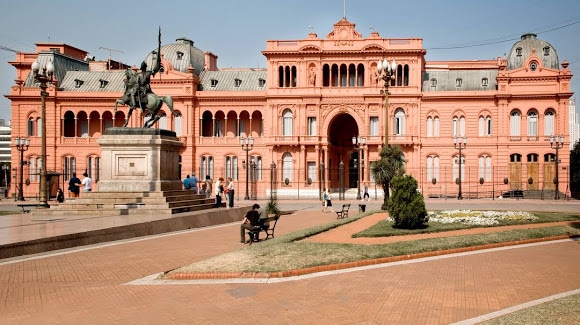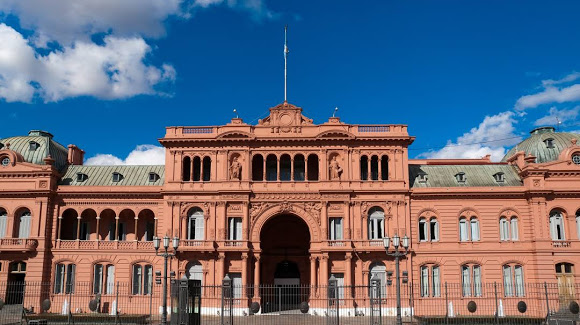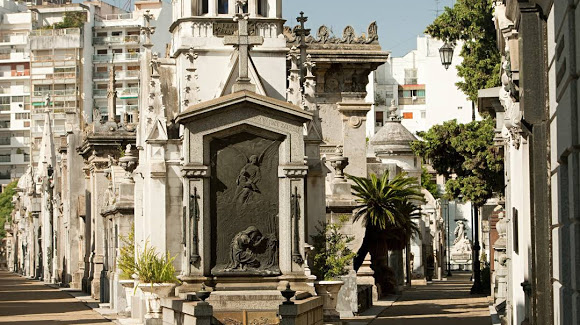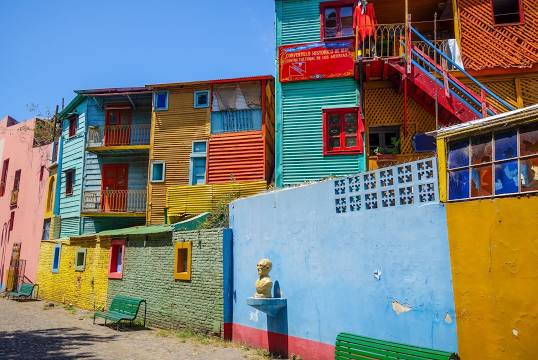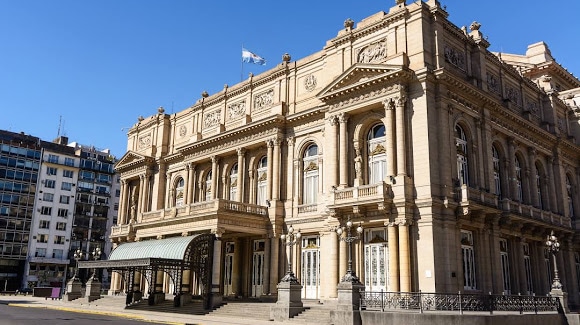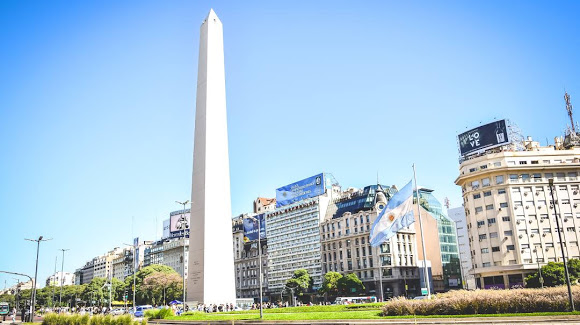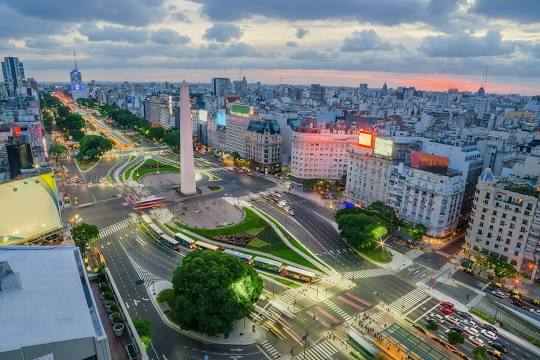Boca Juniors Tryouts
Club Atlético Boca Juniors is an Argentine sports club headquartered in La Boca, a neighborhood of Buenos Aires. The club is mostly known for its professional football team which, since its promotion in 1913, has always played in the Argentine Primera División.
Boca Juniors Youth Development System
Boca Juniors Reserves and Academy
Boca Juniors Reserves and Academy are the reserve and youth academy teams of Boca Juniors. The reserve team is coached by former club player Rolando Schiavi, who debuted in February 2015.

Boca Juniors is the most winning Torneo de Reserva championships with 21 titles won since the squad was established in 1910. Boca Juniors reserve team plays in the “Primera División de Reserva”, the reserve division of Primera División. Home matches are played at Complejo “Pedro Pompilio”, sited in La Boca neighborhood of Buenos Aires.
Boca Juniors Academy
Known as “The Boca Factory”, Boca Juniors youth divisions contains teams from under-8 to under-20 level. They participate in Argentina’s youth leagues organized by the Argentine Football Association. In 1996 Mauricio Macri (who had been elected president of the club one year later) stated that rather than buy players for huge money only to put too much expectation on them and watch them under-perform, they wanted to create their own stars. Therefore, Boca hired two very influential figures; one was Bernardo Griffa, a leading expert of youth in Argentina who had created a successful scouting network at Newell’s Old Boys. The second was Ramón Maddoni, the king of ‘baby football’ (indoor six-a-side football for 5–12 year olds), who had a long career at Club Parque at the moment of being hired by Boca Juniors.
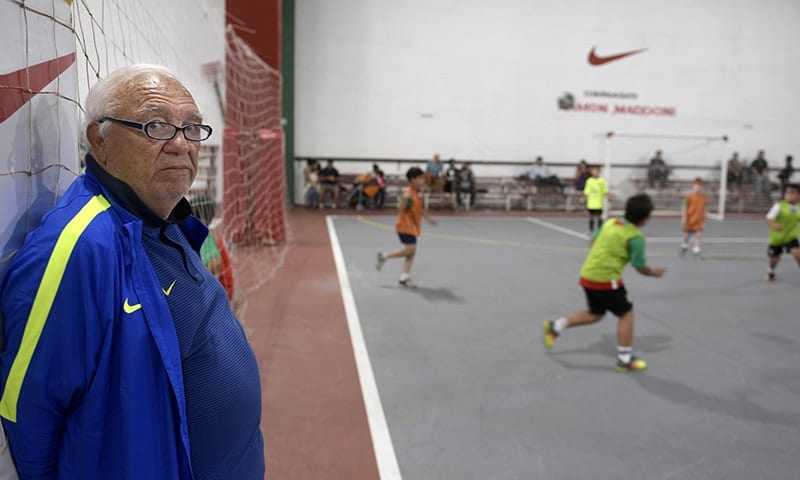
Since then, Boca’s academy has brought through, and also sold, more than 350 homegrown players from all age categories. From the list of the 350 players, more than 130 of the academy graduates would play around the world, including in Argentina, Spain, Italy, England and many others in places ranging from Germany and the Netherlands to China and Israel. More than 35 leagues contain players that were raised and developed by the Boca academy system. The players are taught the same formation (4–3–1–2) from early on to the first-team. This makes fitting into the first-team far easier for a young player. Boca’s under-20 team were regular participants in the Under-20 Copa Libertadores and other international youth football tournaments.
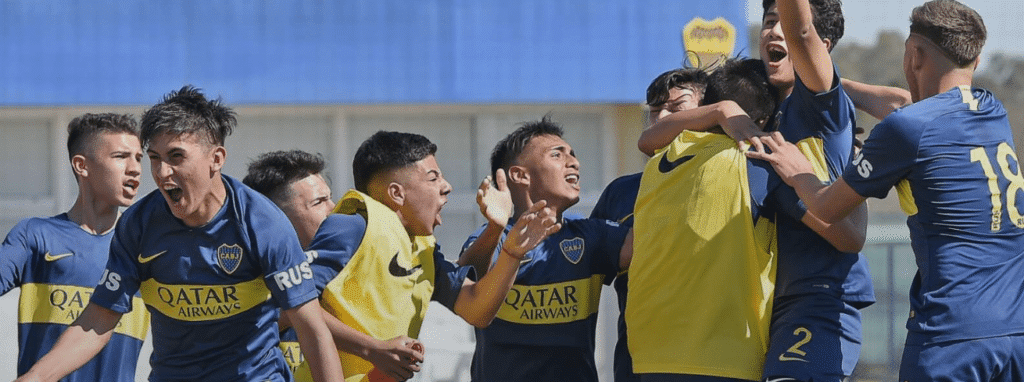
According to Boca Juniors official website, their academy currently has 4th, 5th, 6th, 7th, 8th, 9th, and junior divisions. As of this page update (JAN2021), all of their academy web pages are under construction. You can keep checking back by clicking on the links below.
- Boca Juniors 4th Division Academy
- Boca Juniors 5th Division Academy
- Boca Juniors 6th Division Academy
- Boca Juniors 7th Division Academy
- Boca Juniors 8th Division Academy
- Boca Juniors 9th Division Academy
- Boca Juniors Juniors Division Academy
Beyond the Academy in Argentina:
- Boca Juniors Academy – India
Boca Juniors Scouting
The scouting system is comprehensive. There is a Boca Juniors scout in every small town and close to every village. Nearly all are ordinary people, such as teachers, butchers or policemen, and the head of the youth system, Jorge Griffa, regularly travel around Argentina when he took over and listened to the watching crowd, hiring the most appropriate as a scout for the area.
Boca Juniors Recruitment Trials
At the time of this writing, there is no official publishing’s on Boca Juniors trials. Please come back at a later date while we monitor this club or click here to visit their official news section.
EXPLORE MORE CLUBS!
Explore more professional clubs by continent.
Boca Juniors Overview
Club Atlético Boca Juniors is an Argentine sports club based in La Boca neighborhood of Buenos Aires.

Argentine Primera División, where it has played continuously since its promotion in 1913, is where Boca Juniors is most known for its professional football team, which has won 69 official Argentina championships to date. In addition to their 34 Primera División crowns, Boca Juniors has also won 13 domestic cups. For their successful European tour in 1925, Boca Juniors was bestowed an honorary title by the Argentine Football Association.
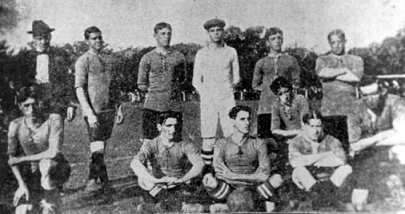
There are 22 international titles in total that Boca Juniors has won, 18 of which were organized by CONMEBOL and the others were jointly organized by the Argentine and Uruguayan Associations. As a result, Boca is the third most successful international club in history, behind only Real Madrid (26) and Al Ahly of Egypt (25). Boca Juniors has also won the Tie Cup, the Honor Cousenier Cup, and the Copa Escobar-Gerona Cup, all of which were jointly organized by the AFA and the AUF. Boca generally ranks in the top 25 of the IFFHS Club World Ranking, which they have topped six times in their history (mostly during the coaching tenure of Carlos Bianchi). According to the International Football Federation Historical Society (IFFHS), Boca was South America’s best club throughout the first decade of the twenty-first century (2001–2010). Along with River Plate, Boca Juniors is a well-known football club in Argentina.
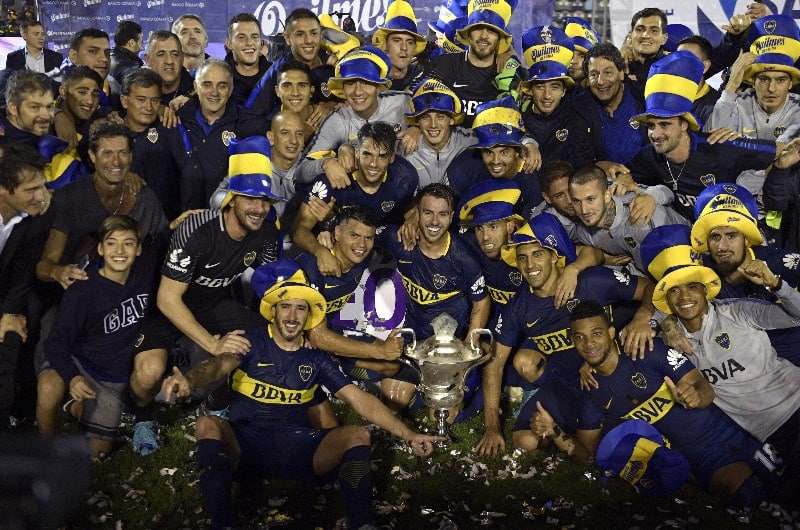
Boca Juniors and River Plate have a long history of rivalry dating back to their founding in La Boca. Superclásico games pit Argentina’s two most popular teams against one another, and they are among the most passionately contested in the world. Estadio Alberto J. Armando, where Boca plays, is affectionately referred to as La Bombonera. Argentina internationals such as Sebastián Battaglia and Nicolás Burdiso are among many that have or are currently playing for big European teams thanks to the youth program.
Boca Juniors History
Boca Juniors was founded in Buenos Aires in the early 1900s by a group of Italian immigrants who wanted to start a football team. Many of them were descended from the first wave of Italian immigrants to La Boca in the late 1800s and early 1900s (mostly from Genoa). Thus, the moniker “Genoveses” has been shortened to “Xeneizes” as a result (in Spanish, it referes to people from Genoa).
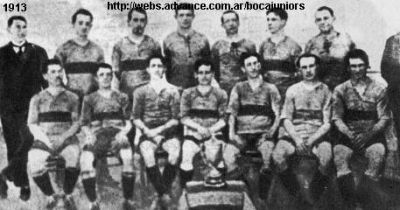
The club’s early years were marked by a bitter rivalry with the then-neighboring River Plate, which endured despite the fact that River Plate eventually relocated to Belgrano. Boca became one of Argentina’s most popular and successful clubs in the XXth century after being promoted to Primera División in 1913. The first significant moment in Boca Juniors’ history occurred in 1925, when the team went on a successful tour of Europe, where they played 19 games and won 15, despite winning their first formal title in 1919 (the Primera División championship).
Boca’s tour was not only the first time an Argentine team had played abroad, but it also helped the club gain a large following in the country. For the first time, the term ‘player number 12’ was used on that tour. It was in Dársena Sud that Boca Juniors played its first home game before La Bombonera was built in 1940. (south of current Puerto Madero neighborhood). Fields on Isla Demarchi and Wilde in Avellaneda Partido are two more options. Ministro Brin and Senguel streets served as the club’s first stadium in La Boca until 1924, when it moved to Brandsen and Del Crucero.
First Title and Success
Seven clubs were dismissed from the Association in 1919, which annulled the current championship and organized a new league with only six teams, including Boca Juniors. Boca Juniors earned its first ever championship in 1919, in the Primera División.
A total of 29 goals were scored and just five were conceded in the team’s victories in all games played. It was Tesoriere, Cortella, Ortega and López Busso, Elli and Calomino, Bozzo, Garasini, Martn that started for the final round. Sp. Almagro was defeated 4–0 by Boca Juniors at the Boca Juniors stadium (Martn and Miranda both scored two goals).
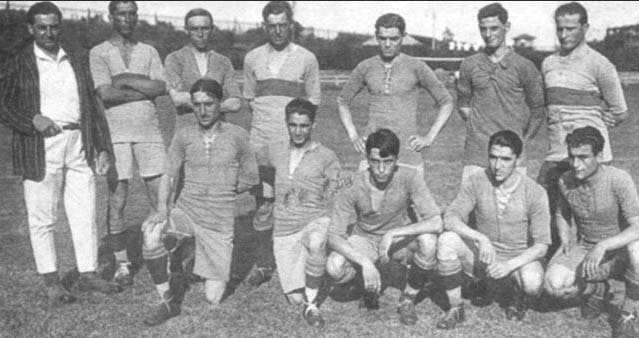
Boca won the national cups Copa de Competencia Jockey Club and Copa Ibarguren in the same year (1–0 wins against Rosario Central) as well as the final edition of the Tie Cup (a 2–0 win over Uruguayan team Nacional at Estadio Sportivo Barracas) (goals by Miranda and Bozzo). 1919 is the most successful season in the club’s history, having won four trophies (1 league, 2 domestic cups and 1 international). The 1920s were also one of the most successful for the team, with nine championships. In 1920, while he was in the 18th round, he won his second league championship in a row. On December 19, Boca defeated Nueva Chicago 7–0. Boca played 24 games in all, winning 20 of them and losing only one.
It took four matches to decide the champion between Boca and Huracán; Boca won the first game but lost the second leg, and the third match ended in a stalemate, necessitating a fourth match, which Boca eventually won 2–0 on April 27, 1924, to claim the title as Primera Division winners. Garasini scored both goals in the game. Bidoglio and Muttis were joined by Médici, Busso, and Elli in the line-up. Calomino, Cerrotti, and Garasini were also in the group. Boca won the Copa de Honor Cousenier in Montevideo in 1923, becoming the first Argentine team to win a trophy outside of the country. the following players were in the line-up: tesoriere; bidoglio; muttis; medici; busso; elli; calomino; cerrotti; tarascon; peri; filiberti; (goals by Pertini and Tarasconi). When Boca beat Rosario Central 1–0 at Sportivo Barracas in 1923, they won the Copa Ibarguren for the second time. This was the line-up: Tesoriere; Bidoglio; Muttis; Médici; Coverto; Elli; Calomino; Cerrotti; Tarasconi; Pozzo; and Pertini. With 18 wins from 19 games, Boca Raton dominated the 1924 season as the only team to go undefeated. Goals were scored an average of 3.52 times per game for the team, with just eight conceded. At Chacarita Juniors stadium, Boca Juniors thrashed Rosario Central 5-1 to win the third Copa Dr. Ibarguren.
Boca Juniors 1930s
After losing the 1929 championship to San Lorenzo de Almagro, Boca won their sixth title in 1930 by defeating Atlanta 4–1 in the final two games of the season. Boca won its seventh league championship in 1931, defeating River Plate 3–0 in the final match, thanks to the establishment of professional football in Argentina. Boca earned 50 points from 22 wins, 6 draws, and 6 defeats for a final tally of 50.
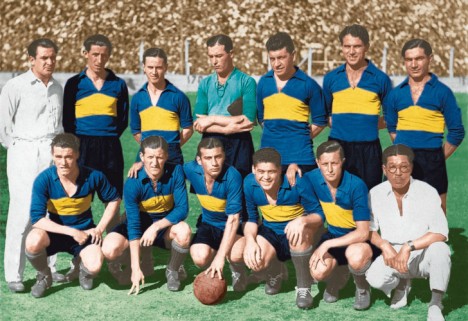
Despite losing seven matches and allowing 62 goals, Boca won the 1934 Copa del Rey. Boca won the championship in round 38 with a 5-1 victory over Platense. The potency of the attackers, who netted 101 goals, was the key. It was Boca Juniors’ 100th goal in the league that made them the first side to reach that milestone in the competition. Boca became the first team to win back-to-back championships in the professional era when they triumphed in 1935. The club also tallied 100 goals and allowed just 29 in the process. Boca Juniors won the championship following a 3–0 win over Tigre in the 33rd round. Boca Juniors’ great idols of the 1930s included Juan Yustrich, Pedro Arico Suárez, Delfin Bentez Cáceres, Domingo Tarasconi, Roberto Cherro, and Francisco Varallo, who were all big-name players.
Boca Juniors 1940s
In the 1940s, Boca won the same number of league championships as in the previous decade, three. In the same year that La Bombonera opened its doors in 1940, the first championship was won. To clinch the title, Boca had to beat Independiente, which it did 5–2. Boca won 24 games, drew 7, and lost 3. At Chacarita Juniors stadium, Boca Juniors thrashed Rosario Central 5–1 to win the Copa Ibarguren (the club’s fourth). Boca won the title for the second time in its history in 1944 after defeating Racing by a score of 3–0 in the final match.
River Plate Stadium was the venue for the match (because the Bombonera had been temporarily closed due to hooliganism incidents). Boca Juniors won 19 of their 19 games, drawing eight and losing three. The line-up for that match against Racing is still acknowledged as one of the greatest Boca all-time teams: Vacca; Marante, Valussi; Sosa, Lazzatti, Pescia; Boyé, Corcuera, Sarlanga, S. Varela, Sánchez. As a result, Boca held the professional era record for the longest unbeaten streak at 26 games, until Racing broke it with a streak of 39 games unbeaten in 1966.
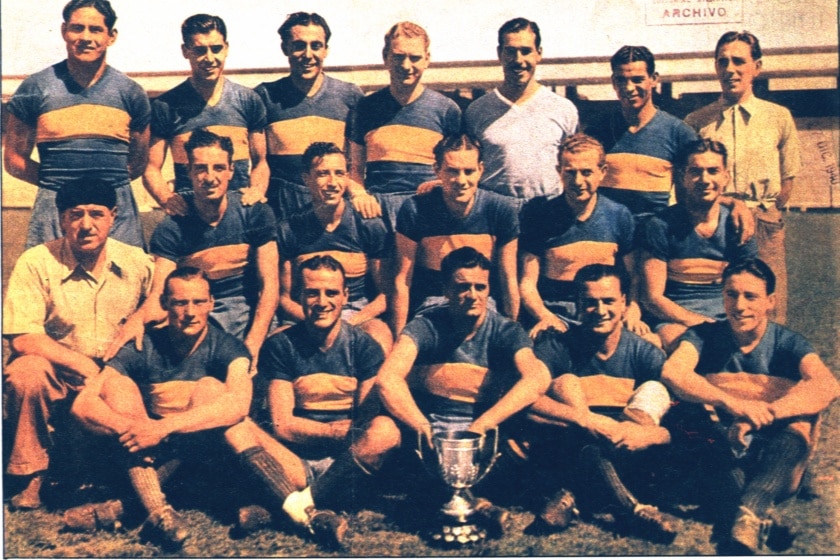
With victory over Tucumán in 1944, Boca Juniors won its fifth Copa Ibarguren. The Copa de Competencia Británica was won by Boca Juniors in 1946, when the team overcame San Lorenzo by a score of 3–1, this time at River Plate stadium. Comparatively speaking in 1949, Boca del Rio came perilously close to going down in the Second Division, but it was saved from that fate by an emphatic win over Lans in their final match. Boca finished bottom of the Primera División for the first time in its history.
Boca Juniors 1950s & 1960s
Boca’s first championship came in 1954, after a nine-year drought. Boca clinched the championship with a 3–1 victory over Huracán. In terms of total points, José “Pepino” Borello took the first spot (19 goals). ‘El arquero cantor’ Julio Musimessi was another standout player (“The singer goalkeeper”). Although Boca won the two “Superclásicos” (5–1 and 3–2 despite being down 2–0), the squad finished eighth in 1959. At the end of December 1962, Boca beat River Plate 1–0 in a classic encounter, with the highlight being goalkeeper Antonio Roma saving a penalty kick by Delem with just six minutes remaining. Estudiantes de La Plata were beaten 4–0 by Boca Juniors in the next match, and the club became champion for the first time in a decade. Boca Juniors won five championships in the 1960s.
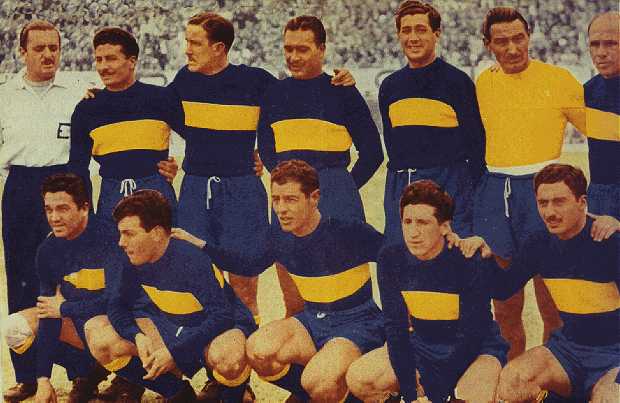
The following championship was won in 1964 by Antonio Roma, who went 742 minutes without surrendering a goal and only allowed one goal in 14 games. Boca won back-to-back championships in the professional era for the third time in 1965. The two victories over River Plate (2–1) and Atlanta (2–1) were crucial to the season. An exit door at River Plate Stadium that was still closed when Boca Juniors fans were leaving the stadium during the 1968 Metropolitano championship final resulted in the deaths of seventy-one of the club’s followers. This incident is still known as “The Tragedy of the Door No. 12” (La Tragedia de la Puerta 12).
In 1969, a debate arose over the legitimacy of a competition called the Copa Argentina. A number of teams from the Metropolitano and elsewhere in Argentina were participating in this group. Following their 3–1 and 0–1 victories over Atlanta, Boca Juniors has been named champions. At the end of the 10 games, Boca Juniors had won 7, drawn 1 and lost just once. Boca played River Plate at the Monumental in its final Nacional championship match that year. Boca was crowned champion after a 2–2 draw in which Norberto Madurga scored both goals. Alfredo Di Stéfano guided the Xeneizes to a 29-point season record, which included 13 victories, 3 draws, and one defeat.
Boca Juniors 1970s
Boca beat Rosario Central 1-0 in the final of the Nacional tournament in 1970. Juan Carlos Lorenzo joined the team in 1976. He would become one of Boca Juniors’ most successful coaches, winning five recognized titles in just three years. For starters, Boca won the Metropolitano in 1976 after defeating Unión de Santa Fe by a score of 2–0 late in the competition. Rubén Sué’s straight free kick goal gave Boca a 1–0 victory over archrival River Plate in the next campaign (1976 Nacional). It was the first Superclásico final between these two clubs until now. Having reached the final match against Cruzeiro in that tournament, Boca Juniors qualified for the 1977 Copa Libertadores. To win the Libertadores for the first time, Boca had to play a third game in Montevideo’s Estadio Centenario, after victories of 1–0 in Buenos Aires and 1–0 defeats in Belo Horizonte. Hugo Gatti saved Vanderley’s final penalty shot in the shootout, which ended 0–0.
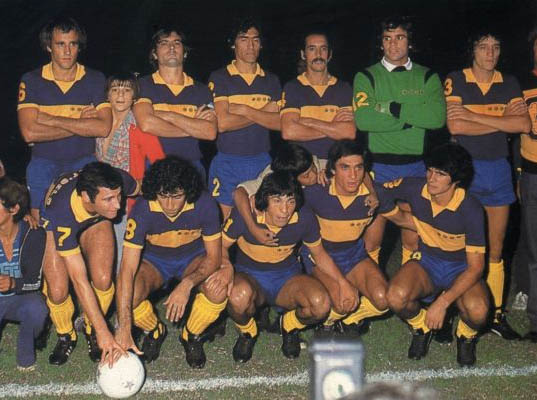
Boca Juniors won the Intercontinental Cup against Borussia Mönchengladbach in 1977, which was the most significant trophy of the decade for the Argentine team (played one year later). When the teams met in Karlsruhe, Germany, on August 1, 1979, Boca won 3–0, bringing the championship back to Argentina after a 2–2 tie in Buenos Aires (goals by Mastrángelo and Ribolzi). Finally, Boca Juniors won the 1978 Copa Libertador after defeating Deportivo Cali (4–0) under the guidance of Carlos Bilardo on November 28th at La Bombonera, capping off a successful second half of the decade.
Boca Juniors 1980s | Maradona Era
Following the 1980s, the squad was managed by club icon Antonio Rattin, while another club legend, Silvio Marzolini, was chosen as coach. The acquisition of Diego Maradona, Miguel Brindisi, Osvaldo Escudero, and Marcelo Trobbiani was the highlight of the 1980s. After a 1–1 tie in the 17th round against Racing, Boca earned their first title of the decade: the 1981 Metropolitano championship. There were 20 victories, 10 ties, and four loses for the Xeneizes. It was Gatti who took the field first against. Racing. The rest of the line-up consisted of Suárez, Mouzo, Ruggeri, and Córdoba. Both Maradona and Brindisi were held in high regard as the team’s most illustrious members.
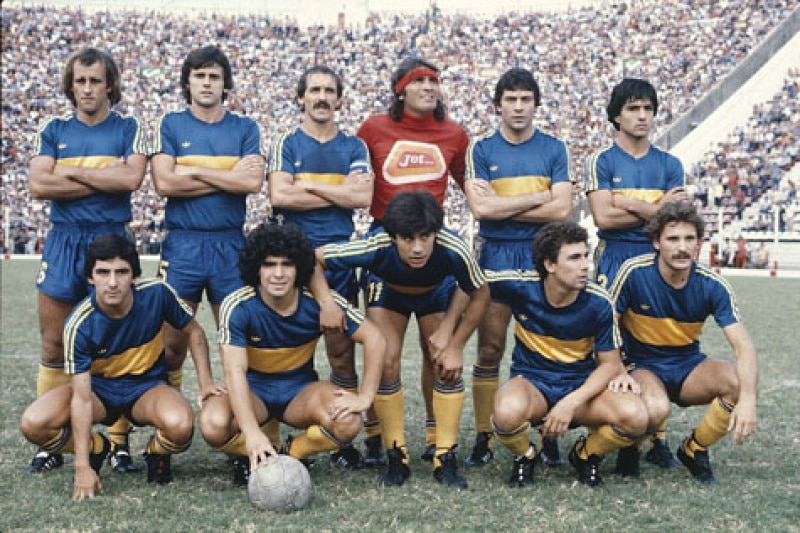
Because of Argentina’s political issues, Boca lost the young Maradona the following year, who travelled to Europe to play for FC Barcelona. In 1984, Boca was on the verge of bankruptcy, and the city’s economy was in freefall. The same year, the team was beaten 1–9 by FC Barcelona in the Joan Gamper Trophy friendly game. Boca Juniors employed multiple head coaches after Marzolini left in 1981, but the team didn’t win a trophy until 1989. Vladislao Cap, Carmelo Faraone, Ral Rodrguez Seoane, Ernesto Grillo, Miguel ngel López, Dino Sani, Mario Zanabria, Alfredo Di Stéfano, César Luis Menotti, Roberto Saporiti, and Juan Carlos Lorenzo (now in his second stint with the club) are a few of the club’s managers. President Antonio Alegre and Vice-President Carlos Heller were elected in 1985.
He settled 153 cases under their leadership by mortgaging $250k in business assets and loaning $800k to Boca Juniors early in his career. By taking these and other steps, they were able to recoup the lost funds for the club. The land Boca had previously purchased for US$21 million was also sold. Resurgent Boca became triumphant in a number of prestigious competitions in succeeding years, including the 1989 Supercopa Libertadores, which was the final tournament of the decade after both legs finished 0-0. First time since the 1978 Copa Libertadores that Carlos Aimar’s team won an international trophy. It was Navarro Montoya, Stafuza, Simón, Cuciuffo, Marangoni, J.D. Ponce (Latorre), Graciani (Pico), Perazzo that started the second leg (S. Berti).
Boca Juniors Bianchi Era
The club hired former Vélez Sársfield coach Carlos Bianchi in 1998, and the team won many local and international championships under his guidance while also shattering the previous record set by Juan Carlos Lorenzo in the 1970s. Carlos Bianchi coached Boca to nine championships. To begin, Boca won the 1998 Apertura, becoming the first team in league history to go undefeated. There were 19 games in which Martn Palermo scored 20 goals, making him the leading scorer. During the 1999 Clausura, Boca became the first team to win back-to-back championships. Racing Club’s record of 39 victories, set in the 1960s, was shattered by the team’s 40-match winning streak. An Argentine professional football record still stands at this point in time.
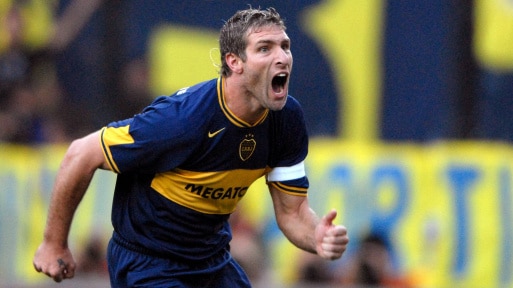
Boca Juniors had their best year in 2000. A penalty shootout victory over Palmeiras in the Copa Libertadores finals broke the team’s 22-year trophy drought, after the teams had drawn twice in the semi-finals. The Sao Paulo final’s most prominent player was goalkeeper Oscar Córdoba. Boca Juniors traveled to Tokyo to face Real Madrid in the Intercontinental Cup in 2000, winning the match 2–1. (goals by Palermo). Boca won a third local title, the Torneo Apertura, in 2000, making it a total of three in that year. In 2001, Boca won the Copa Libertadores in a penalty shootout against Cruz Azul. A 1–0 victory over Boca Juniors in Mexico was followed by a 1–0 loss to La Bombonera on the following day. As in the previous year, Oscar Córdoba was once again the most talked-about player. A disagreement with the club’s chairman Mauricio Macri led to Bianchi’s departure in 2002, and Oscar Tabárez was appointed as his successor, commencing his second stint as the team’s coach. But Bianchi would return to look after the team the next year. Boca won the Copa Libertadores for the third time in four years in 2003. Carlos Tevez was the tournament’s most notable player, while Marcelo Delgado led the team in goals scored with nine. Boca defeated Santos FC 2–0 in Buenos Aires and 3–1 in Sao Paulo in the finals. After a 1–1 draw, Boca Juniors won the 2003 Intercontinental Cup against AC Milan in a penalty shootout after the match finished 1–1. Donnet, a 29th-minute substitute, was voted the game’s best player by the referee. In 2004, Boca reached the Copa Libertadores final, but lost to Once Caldas from Manizales, Colombia in penalty kicks. He resigned when the Cup was ended, ending one of the greatest times in the club’s long history.
Boca Juniors 2010s
As a result of their work with youth teams, the team’s coaches were initially Abel Alves and Roberto Pompei, who were promoted to first-team coach for the 2010 Clausura season. Claudio Borghi (who had won a title coaching Argentinos Juniors the previous season) was hired by Boca to be the team’s new coach after they placed 16th, but he resigned after 14 games because of the poor results he got. For the duration of the Apertura, Roberto Pompei was assigned to serve as the team’s head coach. Boca rounded out the top ten in 12th place. Banfield coach Julio Falcioni was hired by Boca in January 2011 after he led the team to a championship in 2009. The squad finished 7th in the Clausura despite Boca winning the Superclásico (the final match before River was demoted). Martn Palermo, Boca’s all-time leading scorer, announced his retirement in the final match (against Gimnasia y Esgrima de La Plata). Goalkeeper Agustin Orión and former Newell’s Old Boys defender Rolando Schiavi were brought in for the 2011 Apertura. Boca’s 30th league triumph came after a three-year drought when the team defeated Banfield 3–0 in the round of 17. Boca Juniors finished the tournament with a perfect record of 12 victories and 7 draws. The team also set a record for short tournaments in Argentina by conceding the fewest goals (just six in 19 matches) (after Clausura and Apertura championships were established in 1991). In the same year, Boca won the Copa Argentina for the second time, defeating Racing Club in the final in Buenos Aires. Goalkeeper Ustari, defender Caruzzo, and attackers Viatri and Silva were all replaced in the starting lineup.
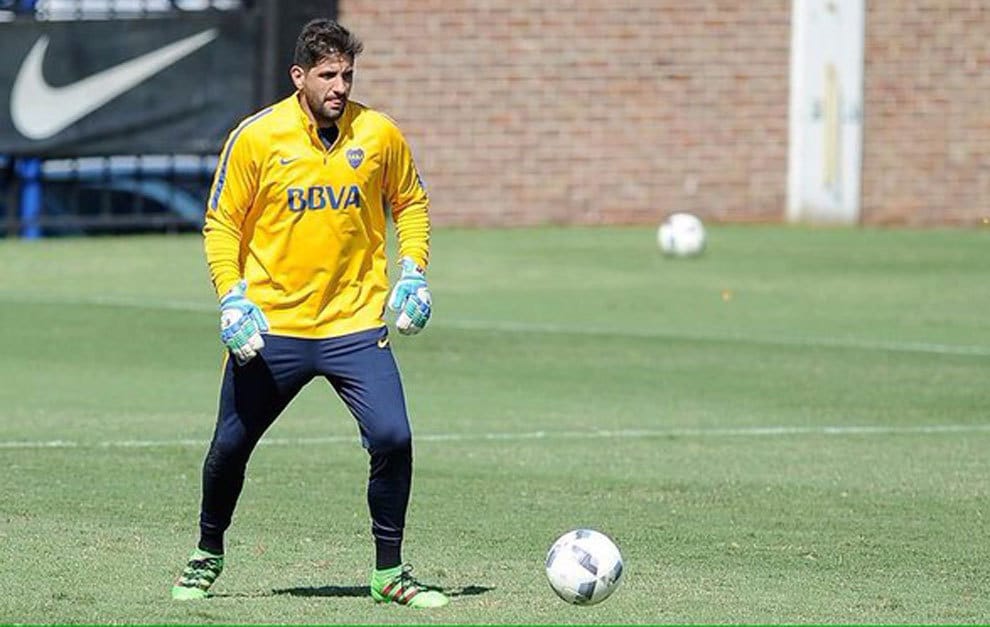
Five years after winning the Copa Libertadores, Boca reached the final in 2012, but lost 3–1 on aggregate against Brazilian Corinthians. The team had already beaten Unión Espanola, Fluminense, and Universidad de Chile in the knockout stages. When it was announced in 2013 that Boca Juniors’ all-time winningest coach, Carlos Bianchi, would be returning to lead the team once more, fans rejoiced. Having played in 74 games with only a 45 percent success rate (26 wins and defeats), giving up 88 goals while scoring 79, and failing to win any titles, Bianchi was fired by the club on August 28, 2014.
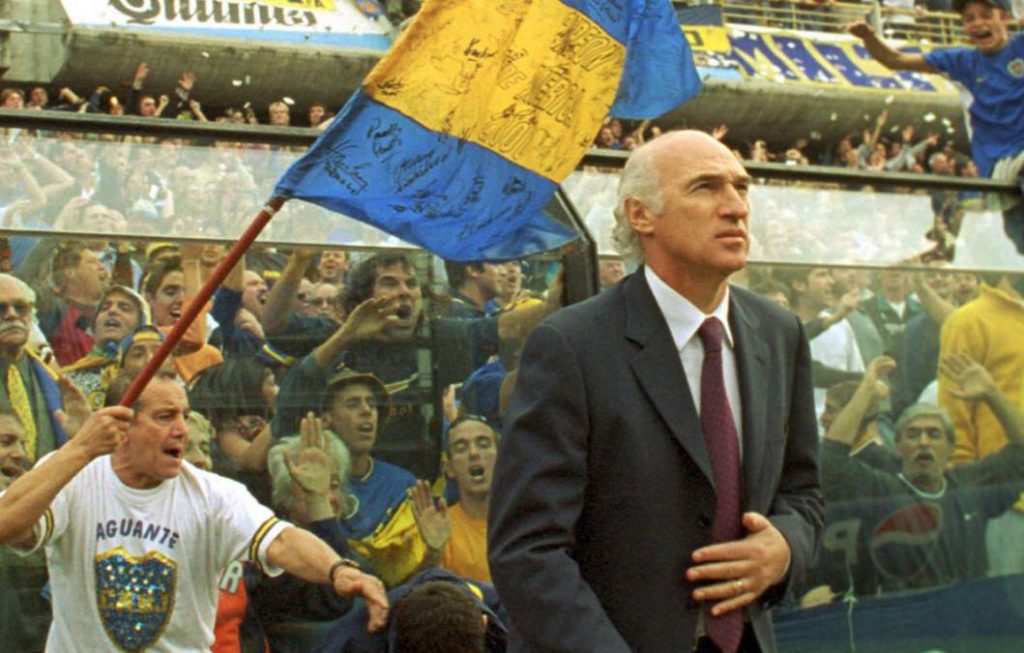
Rodolfo Arruabarrena, a former player, was named as the club’s new manager after Bianchi was fired. Boca Juniors reached the Copa Sudamericana semifinals in 2014, but lost to River Plate (0–1 on aggregate) thanks to Arruabarrena’s coaching. Conmebol excluded Boca Juniors from the Copa Libertadores the following year following the actions that took place during the match versus River Plate at La Bombonera the year before that. At La Bombonera in the second leg of River Plate’s Copa Libertadores semi-final versus Boca Juniors in September, four players were diagnosed with “chemical keritis,” an inflammation of the cornea caused by exposure to chemicals.
As a result of those circumstances, the Boca Juniors had won all six of their group stage matches and only conceded two goals in the process. A goal by Fabián Monzón helped Boca win the 2015 Primera División on November 1, the penultimate match of the tournament, after their Copa Libertadores disappointment earlier in the season. The team’s star player was Carlos Tevez, who had left Juventus to join Boca Juniors at the beginning of the year. Boca Juniors won the 2014–15 Copa Argentina after defeating Rosario Central by a score of 2–0 (goals from Lodeiro and Chávez) at Córdoba’s Estadio Mario Alberto Kempes only three days after winning the Primera División title. Referee Gustavo Ceballos disallowed a goal from Rosario Central and awarded a penalty kick to Boca Juniors for a foul committed outside of the penalty area during the encounter.

Kit and Crest
Since its inception, the team has worn a white shirt with black vertical stripes, which was later changed with a light blue shirt, before finally adopting the team’s current blue and gold color scheme. In spite of this, other accounts claim that Boca Juniors’ original shirt was pink, despite the fact that this claim has been challenged by journalists and historians who claim that there is no strong evidence to back this claim and that it is only based on shaky testimony.
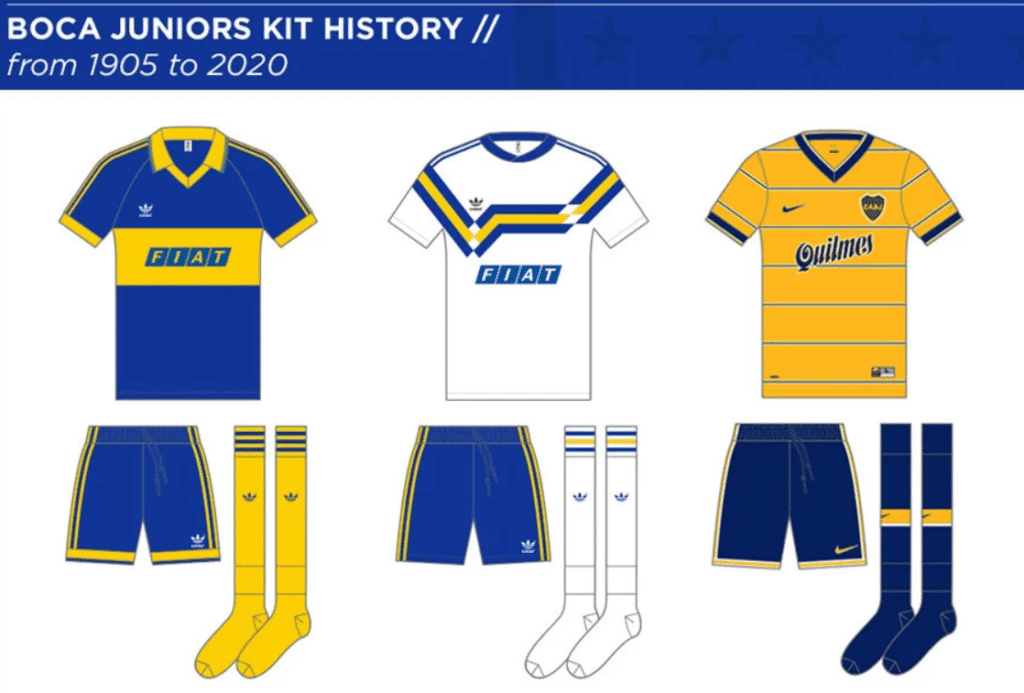
According to folklore, Boca Juniors fought Nottingham de Almagro in 1906. In order to keep the jersey, the match had to be played. Both teams wore very similar shirts. Boca was defeated, and opted to adopt the colors of the flag of the first boat to arrive at La Boca’s harbor.. The yellow and blue of the Swedish flag were selected as the team’s new colors after this ship was discovered to be a Swedish vessel. Striped yellow appeared in the original iteration before being replaced by horizontal yellow in the later version. Some “unique” types have been worn by Boca Juniors throughout the club’s history, such as the AC Milan shirt worn against Universidad de Chile in the 1963 Copa Libertadores. Some people were unhappy with Nike’s earlier design for the team’s uniforms, which had two thin white stripes surrounding the gold ring. In addition, a silver shirt customized for the 1998 Copa Mercosur was unveiled by the company.
This shirt was worn twice during the 2005 Torneo de Verano, one with the diagonal sash of the 1907 shirt and the other without, to commemorate Nike’s 100 years as the club’s official sportswear partner (Summer championship). The “Torneos de Verano” of 2012 and 2013 used a black and white striped shirt (similar to Juventus FC’s) and a purple model, respectively. However, no garment was more divisive than the 2013–14 season’s pink away jersey, which was roundly panned by supporters. Consequently, the debut of this model (to be used against Rosario Central) was delayed until the last match when Boca met Gimnasia and Esgrima (LP). Nike created a neon yellow shirt to replace the pink version and released it the same season.

For the first time ever in 2016, the team donned a black uniform. When it was first released, this was the third kit in the series. Only four days after club president Daniel Angelici declared the black kit would never be worn, the kit made its debut against Tigre. Since January 2020, Adidas has been the club’s official clothing supplier. Upon signing the contract, the club will get US$10,069,000 in cash and 40% of all future revenues, which will be paid through 2029.
Crest
The club’s badge has gone through five iterations during the course of its existence, with the exception of a few minor alterations. The first time the club’s insignia was seen was on letterhead paper in 1911. At the beginning of 1932, Real Madrid stated that the emblem would be adorned with one star for each title in the Primera División they won. It was not until 1943, however, that a Report and Balance Sheet would mention the stars.

An insignia with laurel leaves was introduced in 1955 to commemorate the club’s 50th anniversary, while the star emblem has been used since 1993. New badges were introduced by the Ronald Shakespear Studio in 1996 as part of a new visual identity for the club. Typography and design elements were reworked for the redesigned Boca Juniors logo.
Boca Juniors Stadium
Prior to moving to Brandsen, Boca Juniors played at various other locales. To meet the league’s minimal requirements in 1907, Dársena Sur (now known as Puerto Madero) of the old Buenos Aires harbor was deserted by the club. Between 1908 and 1912, Boca Juniors played at three different Isla Demarchi locations. To begin with, the club didn’t have a stadium of its own and had to play at the Estudiantes de Buenos Aires in Palermo (on Figueroa Alcorta and Dorrego), but also at Avellaneda (first official derby against the River). For a brief period in 1914-1915, the team relocated to Wilde in the Avellaneda Partido of Greater Buenos Aires from its original home in La Boca (after the first shift in 1913), but a disappointing season and low attendance in 1915 prompted the club to return to La Boca.
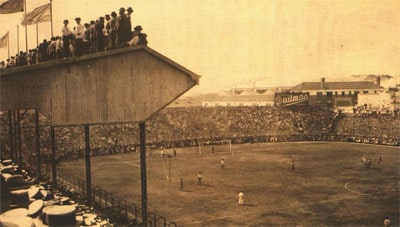
It wasn’t until Boca Juniors moved to Brandsen and Del Crucero streets (now known as Del Valle Iberlucea) in 1924 that they began playing in their new stadium, which they used until 1938, when they decided to construct an entirely new stadium with a concrete grandstand in place of the previous wooden one. Construction of Boca Juniors’ present stadium began in 1938 under the direction of Engineer José L. Delpini, who oversaw the project. Until the stadium’s completion on May 25, 1940, Boca played its home matches at Ferro Carril Oeste’s Estadio Ricardo Etcheverry in Caballito.
A third floor was constructed in 1953, resulting in the nickname La Bombonera (‘The Chocolate Box’). It was only in 1996 that the stand next to the Casa Amarilla train platforms was rebuilt with additional balconies and pricey VIP boxes. There are no other options for building the Bombonera’s fourth side except stacking many seating spaces on top of one another. This is the only way the structure can be integrated into the club’s grounds. In particular, the unusual vertical side of La Bombonera will sway slightly, giving to the term “La Bombonera no tiembla. Late,” which means “The Bombonera does not tremble. Late.” It’s a keeper).

Around 54,000 people can fit inside La Bombonera at any given time. To get into the game versus River Plate, tickets can be hard to get by because of how popular the club is. Improvements to the stadium, including measures to relieve crowd congestion, the use of new technology and improved corporate facilities, are being proposed. While La Bombonera was under construction, Boca Juniors also played home games at Estudiantes de Buenos Aires’ stadium (in 1913, then located on Figueroa Alcorta Avenue) and Ferro Carril Oeste stadium.
Boca Juniors Supporters
Traditionally, Boca Juniors has been viewed as the club of Argentina’s working class, in contrast to Club Atlético River Plate’s apparently more affluent base. Only 40 percent of the Argentine population claims to follow Boca Juniors, despite the club’s claim to be “half plus one” of the country’s population (la mitad más uno). They have the most supporters in their country, as measured by percentage.
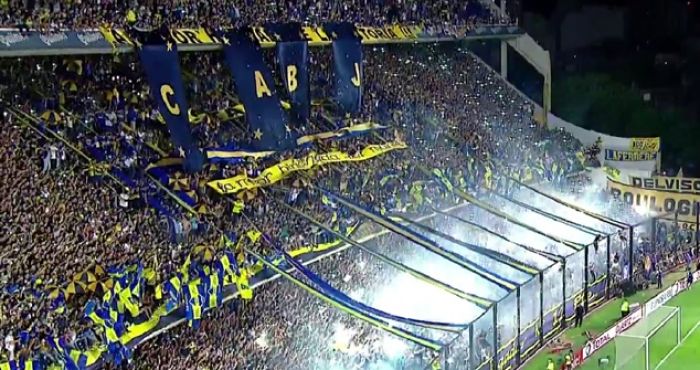
There are few rivalries as exciting as the Boca-River Superclásico. Out of their previous 338 encounters, Boca has 126 victories, River has 107, and there have been 105 goals for and goals against in a draw. When a team loses (except in draws), fans pay for street signs to cover Buenos Aires with hilarious posters “ribbing” the losing team. Since the Boca winning streak of the 1990s, this has become ingrained in Buenos Aires culture. Mary Esher Duffau, better known as La Raulito, a Boca Juniors fan, was the subject of a 1975 film, La Raulito. That same day, Boca Juniors faced Cruzeiro in the Copa Libertadores, with players and supporters honoring a minute of silence in her remembrance as she was 74 years old.
Nicknames
Because the team was formed by Genoese immigrants who settled in La Boca in the early twentieth century, Boca supporters are referred to as Los Xeneizes (the Genoese). Since the horse manure was utilized at the brick factory that occupied the site of La Bombonera, many rival Argentine fans refer to Boca Juniors fans as Los Bosteros (the dung handlers). Rivals used it as a slur, but Boca fans now embrace it as a badge of honor. Boca’s shirt is often known as la azul y oro because of its blue and gold color scheme (the blue and gold). In addition, there is a group known as la nmero 12 or la doce that devotes its efforts solely to supporting the team (player number doce or 12, meaning “the 12th player”) An Argentine crime syndicate known as “La Doce” is comparable to other “barra brava” gangs linked to football clubs in the country. Assault, drug sales and trafficking, extortion, and murder are just a few of La doce’s illegal acts. For La Doce, the money comes from selling parking, reselling club tickets, and taking a cut of every player’s sale. La doce also extorts money from Boca Juniors to cover the costs of their travel to and participation in tournaments both domestically and abroad. As a last resort, they threaten violence at home matches or the removal of club executives if their demands are not granted.

Boca Juniors fans began calling the twelfth player “La 12” (the twelfth player) during the team’s 1925 European tour. A wealthy Boca supporter named Victoriano Caffarena accompanied the squad at the time and helped fund a portion of the journey. Because he was so helpful to the team throughout that tour and developed close bonds with the players as a result, they gave him the nickname “Player No. 12.” Caffarena was as well-known in Argentina as the players when they returned. Today, the term “La 12” is largely used to refer to the group of fans who follow the team.
International
Fans in Argentina and around the world can join local Peas (fan clubs), which exist in cities like Buenos Aires as well as in countries such as Russia, Ukraine and Spain. Boca Juniors’ recent win at the Intercontinental Cup in Japan has made the club popular in Japan. Among the many supporters who follow Boca are some who were inspired by Boca legends like Hugo Ibarra, Rodolfo Arruabarrena, Diego Cagna and Enzo Ferrero, as well as those who went on to play in European football for Diego Maradona, Claudio Caniggi and Juan Román Riquelme.
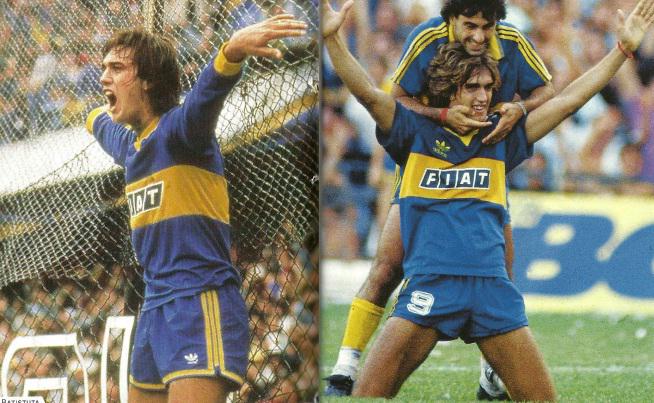
After a pre-season tour of the United States in July 2007, it was reported that Boca Juniors were examining the potential of forming a Boca Juniors USA squad to participate in the Major League Soccer (MLS).
Rivalries
Rivalry between Boca Juniors and River Plate has been going on for a long time. The Superclásico is one of the most passionate and prominent rivalries in world football. Fireworks, confetti, banners, and rolls of paper adorn the stadium stands of both sides, demonstrating the fans’ unbridled enthusiasm. Stadiums are known to bounce with the simultaneous hopping of the spectators as both sets of supporters chant impassioned songs (typically based on popular Argentine rock band songs) in opposition of their opponents. Riots have broken out during games between the most ardent fans of opposing teams or against police officers. One of the top 50 things to accomplish in sports before you die, according to the English daily The Observer, is to attend a Superclásico (held at La Bombonera).
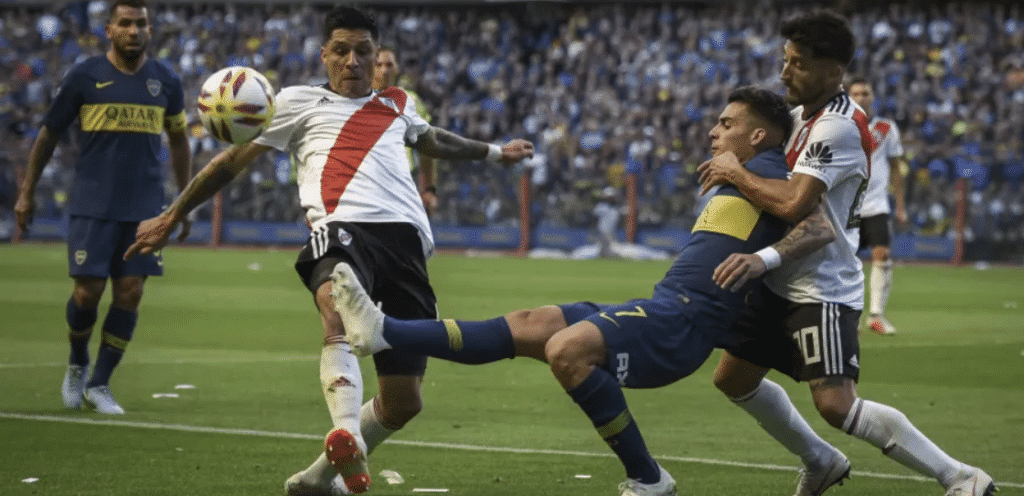
La Boca, a poor riverfront neighborhood of Buenos Aires, is where both clubs were founded. River, on the other hand, relocated to the city’s affluent Nez area in 1923. There have been 338 games between Boca Juniors and River Plate over the years, with Boca winning 126, River winning 107, and 105 games drawing. With 198 games in the First Division Professional Age, Boca won 72 and River had 66 wins and 60 ties. Players like José Manuel Moreno, Hugo Orlando Gatti, Alberto Tarantini, Oscar Ruggeri, Julio Olarticoechea, Carlos Tapia, Gabriel Batistuta, and Claudio Caniggia have played for both clubs despite the fierce rivalry.
City of Buenos Aires, Argentina
Autonomous City of Buenos Aires, or Buenos Aires, is Argentina’s most populous metropolitan area and capital city. The city is situated on the Ro de la Plata estuary on the southeastern coast of the South American continent. It is possible to translate “Buenos Aires” as “fair winds” or “excellent airs,” but the 16th-century founders used the original name “Real de Nuestra Seora Santa Mara del Buen Ayre,” which is based on the Madonna of Bonaria in Sardinia, to convey the former connotation. It is estimated that the Greater Buenos Aires conurbation, which encompasses numerous Buenos Aires Province districts, has a population of approximately 15.6 million people.
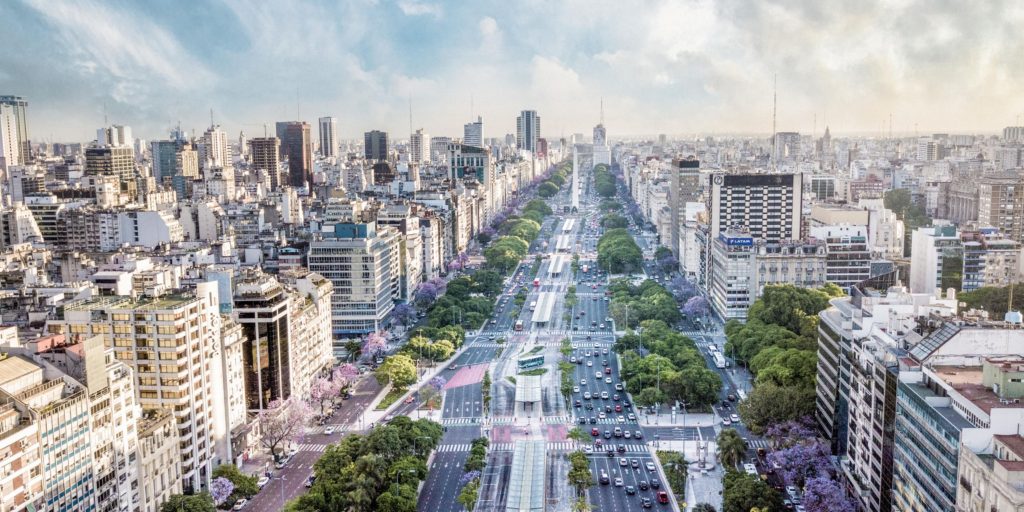
Geography
Only a few areas of the city, such as Buenos Aires Ecological Reserve, Boca Juniors (football) Club “sports city,” Jorge Newbery Airport, the Puerto Madero neighborhood, and the main port itself, were built on land reclaimed from the Rio de la Plata (the world’s widest river) in order to accommodate the city’s rapidly expanding population and infrastructure.

The area used to be spanned by a variety of streams and lagoons, some of which were refilled and others of which were buried. Additionally, there are the Medrano, Cildaez, and White rivers, all of which are notable. Floods in 1908 caused extensive damage to the city’s infrastructure, necessitating the rerouting and straightening of numerous streams. By 1919, the majority of these streams had been enclosed. In 1954, the Maldonado was re-tubed and now runs beneath Juan B. Justo Avenue in San Juan, Puerto Rico.
Climate | Weather
There are four distinct seasons in the humid subtropical climate of Buenos Aires, according to the Köppen climate classification (Cfa). Because to the nearby Atlantic Ocean’s maritime influences, the climate is generally mild, with few instances of extremely high or low temperatures. In a region where the Pampero and Sudestada winds meet, the city’s weather is constantly changing due to these two distinct air masses passing by. There was a lot of lightning and heavy rain at Plaza San Martin at the time. Summer is a stormy season.
Summers are oppressively hot and muggy. With an average daily temperature of 24.9 °C (76.7 °F), January is the warmest month of the year. During the summer months, heat waves are a typical occurrence. As a result, most heat waves last less than a week and are quickly followed by a cold and dry wind known as the Pampero that brings thunderstorms and lower temperatures. It was on January 29, 1957, when the temperature reached 43.3 °C (110 °F).

Winters are moderate during the day and chilly at night, making them ideal for outdoor activities. The season’s average high temperature is 16.3 °C (61.3 °F) while the season’s average low temperature is 8.1 °C (46.6 °F). As a result of the high relative humidity, the city experiences moderate to heavy fog during the autumn and winter months. At an average temperature of 51.8 °F, July is the chilliest month. Almost every year, Antarctica-based cold periods might last for several days. Warm air masses from the north can occasionally bring higher temperatures to the area. An extremely low temperature was observed on 9 July 1918 at the Central Observatory of Buenos Aires (Buenos Aires Central Observatory).
On 9 July 2007, amid Argentina’s worst winter in nearly 30 years, strong snowfalls and blizzards swept across the country, resulting in the last snowfall in the city. Since 1926, the city had not seen a significant snowstorm of this magnitude. The weather tends to be fickle in the spring and fall. Cooler temperatures can be brought on by cold air from the south, while hot humid air from the north can bring on extremely scorching conditions. Each year, the city receives 1,236.3 millimeters (49 inches) of rain. The city is particularly prone to floods during periods of heavy rainfall due to its geomorphology and drainage infrastructure.
Buenos Aires Lifestyle
